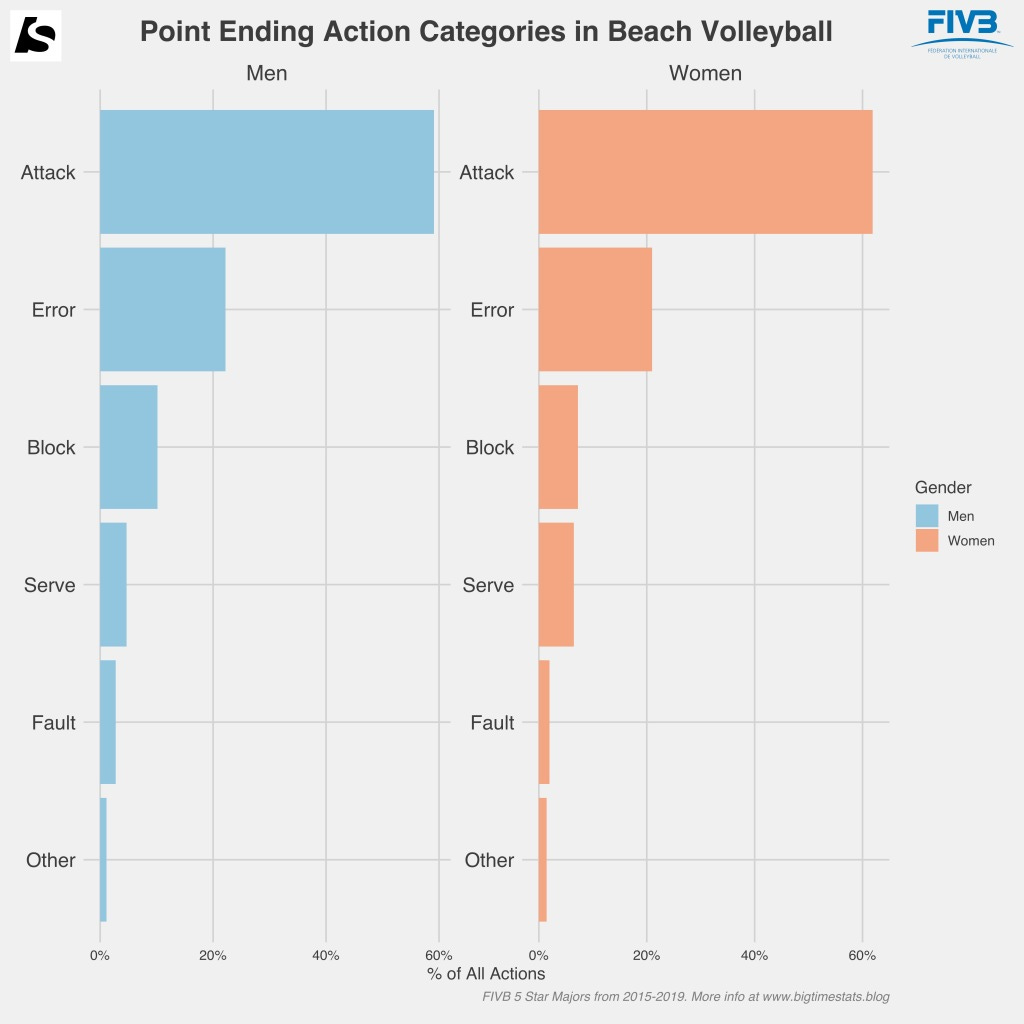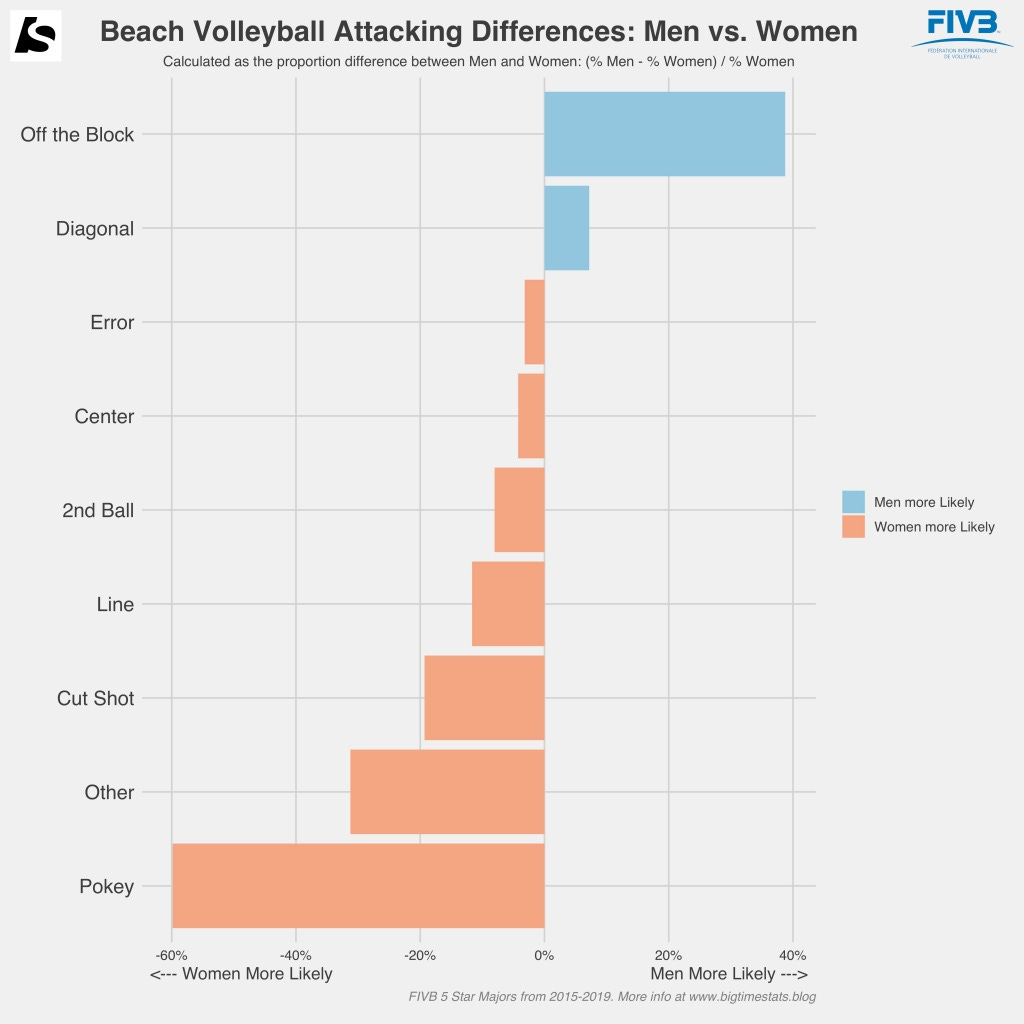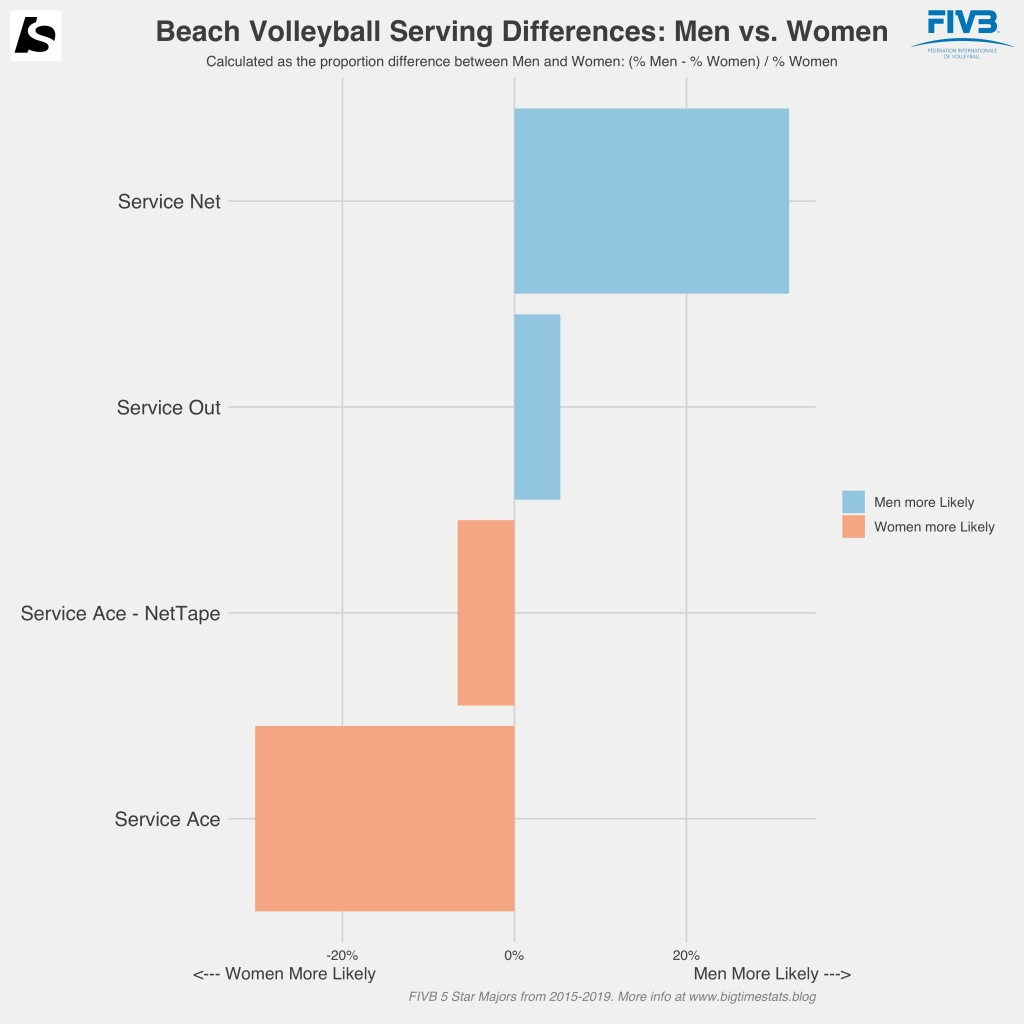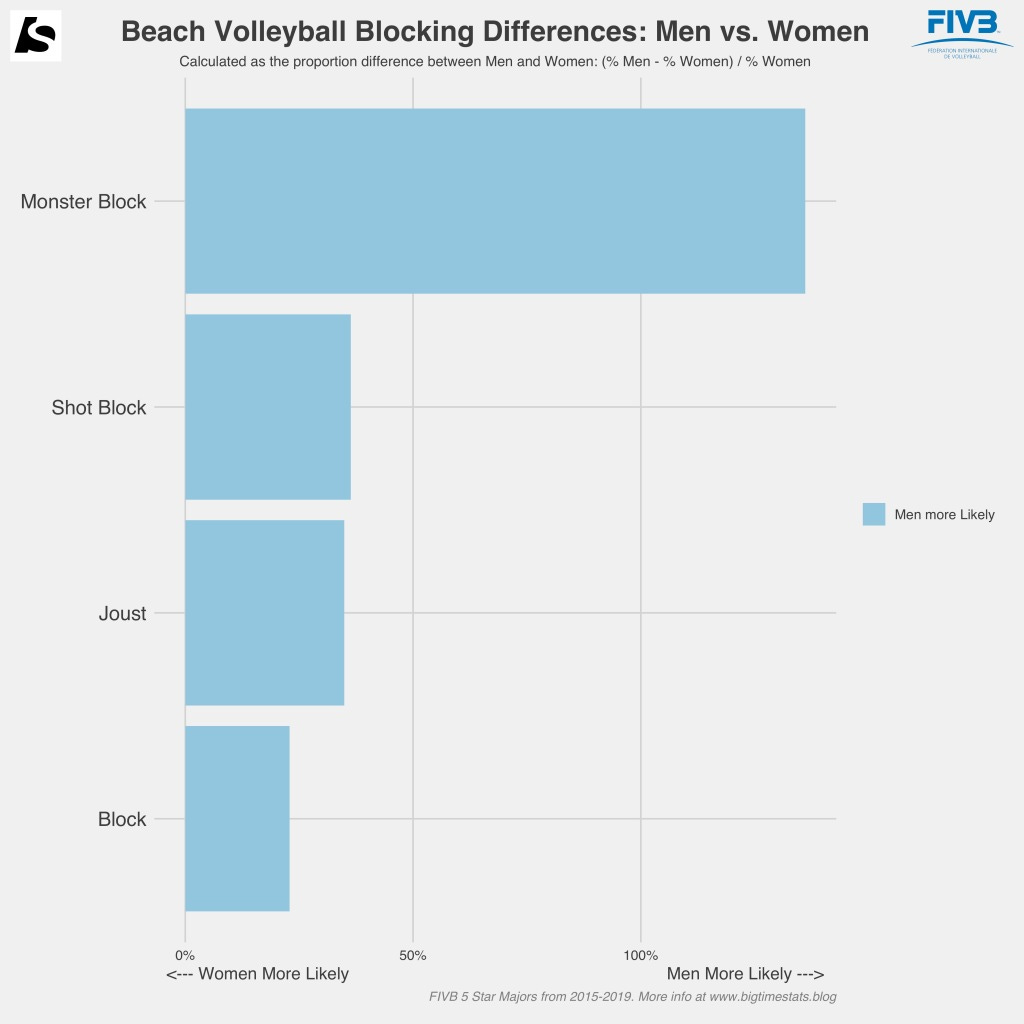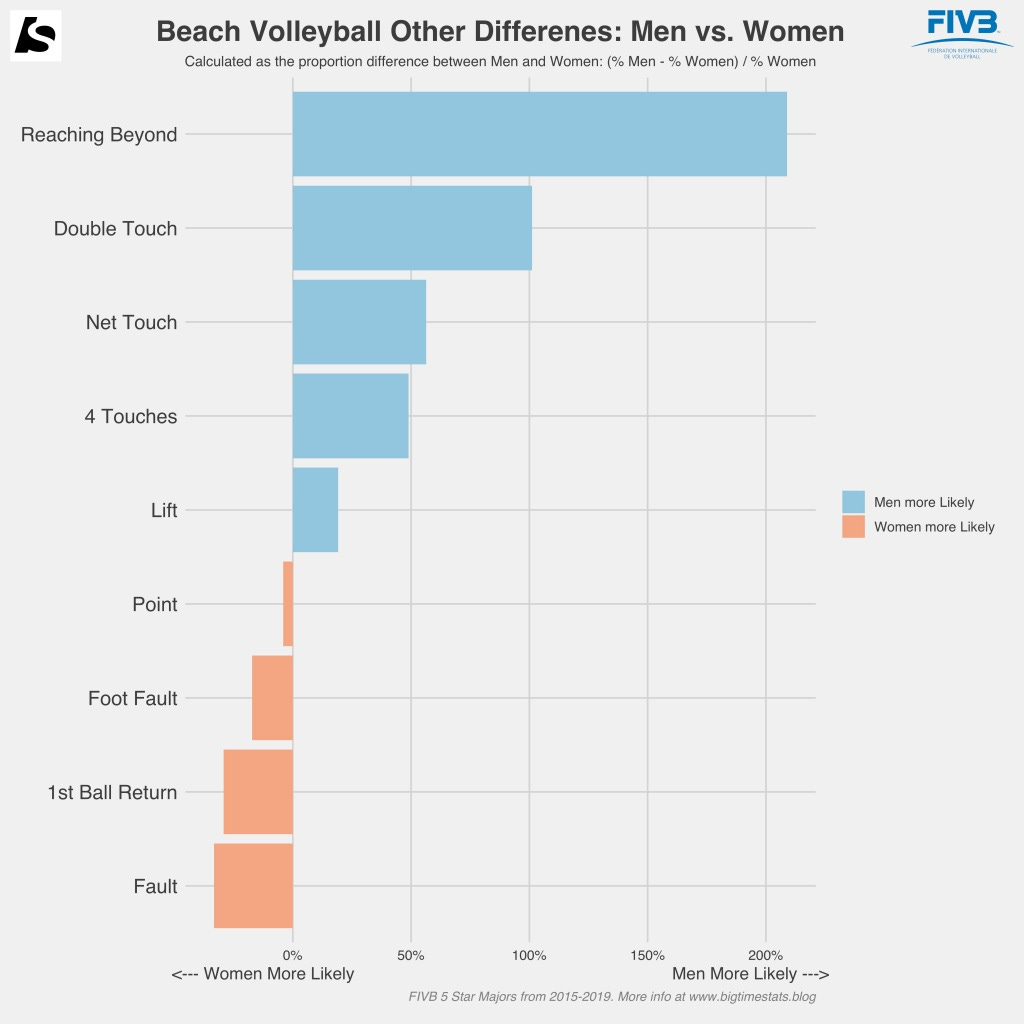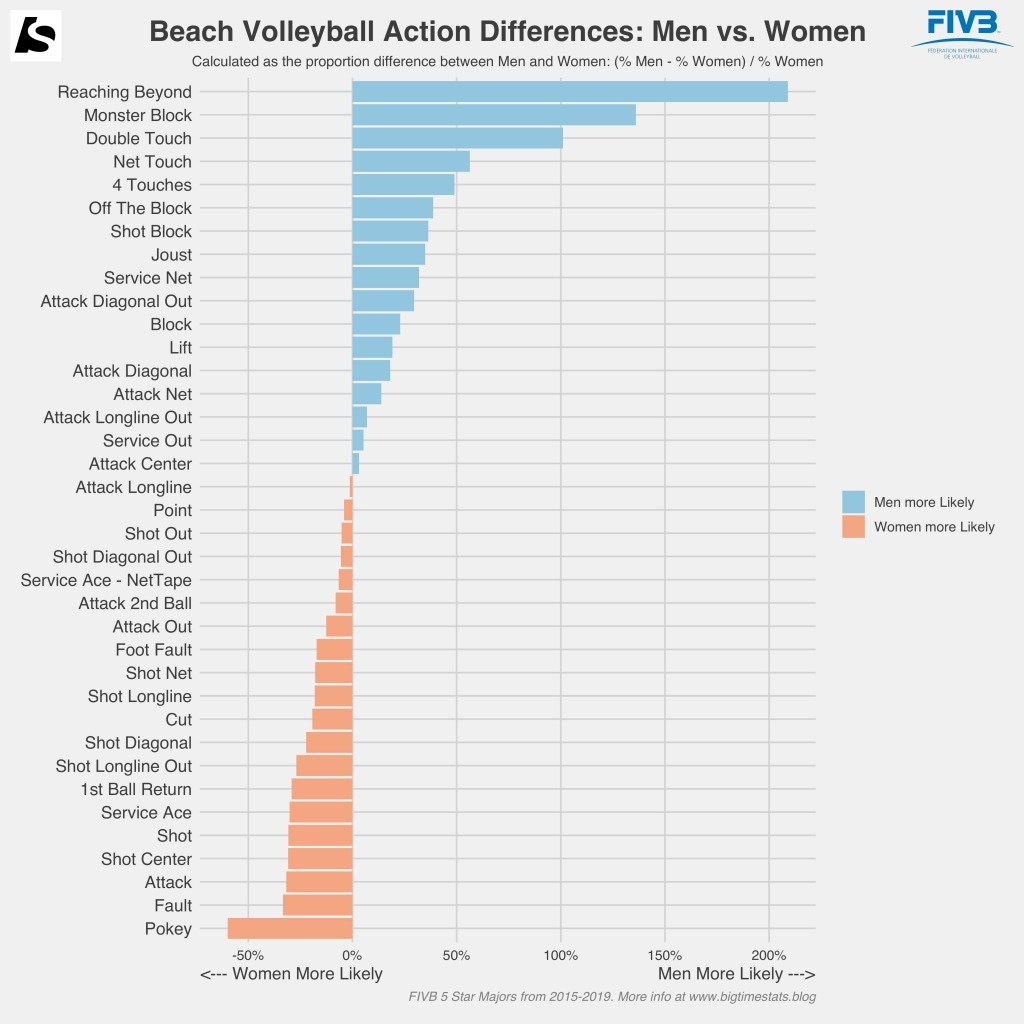Battle of the Sexes: Top 3 Differences in Beach Volleyball
Part 1 of a point-by-point, deep-dive analysis into shot selection differences between men and women
Like me, you probably watched the latest Beach Volleyball tournaments and the epic race to qualify for the Olympics. You probably just loved watching volleyball. But I was excited about something else. I couldn’t wait to analyze a new batch of data. The FIVB doesn’t report out match stats like the AVP, so I gathered a new point-by-point dataset from past FIVB tournaments. In my first analysis, I examine the shot selection differences between men and women.
tl;dr
The women’s game is more “crafty” than the men’s game. Women do more pokeys, more 1st ball returns, serve aces, and net tape serves.
The men’s game pushes the boundary of the rules. Men have more net touches, double touches, lifts, and other referee calls.
Men’s games are more likely to end with one-on-one standoffs at the net. Women end points with shots and rolls while men end points with blocks and jousts.
Point Ending Action Overview
Every point has a final play, whether it’s a monster block, a service ace, or a kill. It’s not surprising that attacks, like roll-shots, pokies, and kills account for 60%+ of point ending actions on both the Men’s and Women’s professional tours.
As you can see, the distribution is pretty consistent across the men’s and women’s tour. Both men and women are most likely to end a point with an attack. And as one of my friends likes to say, "consistently passing well leads to more success in your side-out game". The professionals are generally playing error free games with errors making up 3x less point ending actions than attacks. But let’s take a look at each category - attacks, service, blocks, and faults to get a better idea of where the men’s and women’s games differ.
Categories:
Attack - an overhead hit or spike over the net
Serve - either an ace or service error
Block - a kill block, not including block outs
Fault - referee calls, e.g. lift or illegal contact
Other - catch all category, e.g. 1st ball return and other non-labeled data
Attacks
This visualization shows the difference in attack types by men’s and women’s tours. The men’s tour is much more likely to attack off the block while the women’s tour is more likely to see pokey attacks. On the women’s side, we also see more 2nd ball attacks (instead of setting their partner) and cut shots. I would describe these types of attacks as more crafty due to the inherent deception of trying to fool the other team.
Serve
Service errors are more prevalent in the men’s game while ace serves are more prevalent in the women’s game. Cheeky net serves happen more often in the women’s game. I’d be interested to know if this trend is due to chance alone or if players on the women’s tour are more intentional about hitting the tape to get aces.
Blocks
All blocking actions are more prevalent on the men’s tour, which sees 120% more Monster Blocks than the women’s tour. Data from the AVP tour also seems to show that men get about 1.7 blocks per player per match compared to ~1 block per player per match on the women's side. However, what qualifies as a “Monster” Block vs. a regular block. Is this adjective used specifically on the men’s tour? Or, due to the nature of attacks above, blocks on the men’s tour are coming from hard hits vs. more crafty attacks on the women’s side which wouldn’t yield a “Monster” Block.
Faults & Other Actions
Generic point ending actions such as “Point” and “Fault” are more prevalent in the women’s game than the men’s game. This could be due to data labeling or coding issues during the matches. It’s also possible that certain actions in the women’s game don’t have a clear label to describe what happened.
We can see that the men’s tour is almost 200% more likely to have a “Reaching Beyond” call during a point. This is when you illegally touch the ball when it’s on the opponent's side of the net. They’re also more likely to have a “Double Touch” called, which generally signifies an illegal handset with the fingers (e.g. arms contacting the ball at different times). However, it’s possible that men attempt more hand sets and therefore are more likely to receive this call, which would not be possible to tell from the current data.
Interestingly, the women’s tour has more “Foot Fault” calls during the serve. Anecdotally, while watching the Cancun Hub FIVB events, I noticed many foot faults on the men’s side that were not called. When they were called, the teams would argue with the referees, making me wonder if the referees may be worried about making certain calls, especially if players will argue back heavily.
Raw Stats
This is the compilation of all the stats shown above in 1 easy-to-share visualization
Make sure to subscribe to see the next part in the series, including shots under pressure and player level play-by-play data.




